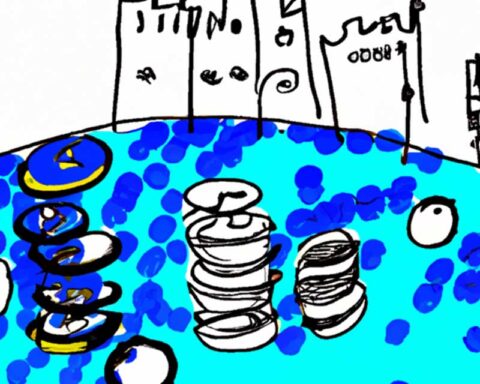TLDR:
- Deposition of organic matter in the oceans is not directly linked to the storage of carbon dioxide (CO2) in the deep ocean, according to climate researchers.
- The marine biological carbon pump (BCP) is driven by phytoplankton and zooplankton, which convert carbon dioxide into biomass that sinks to the deep ocean when the zooplankton die.
- Researchers argue that the biological and physical elements of the BCP must be considered, including withdrawal of CO2 from the deep ocean through ocean circulation.
- Scientists propose a more precise approach to measuring the CO2 reservoir resulting from biological processes by considering oxygen content and physical characteristics of the ocean’s interior.
- Despite a decrease in carbon export, the BCP contributes to increased carbon storage in the deep ocean due to shifts in ocean circulation under climate change.
Climate researchers Dr. Ivy Frenger from the GEOMAR Helmholtz Center for Ocean Research in Kiel and Dr. Angela Landolfi from the National Research Council in Rome have argued that the deposition of organic matter in the oceans is not directly linked to the storage of carbon dioxide (CO2) in the deep ocean. The process, known as the marine biological carbon pump (BCP), is driven by phytoplankton and zooplankton. Phytoplankton convert carbon dioxide into organic biomass through photosynthesis, while zooplankton feed on the phytoplankton and release some carbon dioxide while also converting carbon into body mass that eventually sinks to the deep ocean when the zooplankton die.
The key area of contention is the process of sinking organic matter, also known as the “export flux.” As organic matter sinks into the interior ocean, it is broken down by bacteria, resulting in the production of inorganic matter. This inorganic matter becomes sequestered in the deep ocean, which captures and stores CO2. The deposition of decaying organic matter is crucial for the survival of life in the deep ocean’s benthic zone.
Dr. Frenger and her colleagues argue that the scientific community should consider not only the process of deposition and storage of CO2 but also the “withdrawal” of CO2 from the deep ocean through ocean circulation. They propose a more precise approach to measuring the CO2 reservoir resulting from biological processes by considering factors such as oxygen content and physical characteristics of the ocean’s interior. This approach takes into account the role of ocean circulation, which determines how much biologically produced CO2 can be accumulated in the interior ocean in the long term, isolated from exchange with the atmosphere.
The researchers also highlight how climate change can influence the variables involved in the BCP, leading to seemingly contradictory responses. Despite a decrease in carbon export, the BCP can still contribute to increased carbon storage in the deep ocean due to shifts in ocean circulation. This delayed feedback of biologically stored carbon to the surface leads to a greater accumulation of CO2 in the ocean’s interior under climate change compared to a scenario without the BCP.





